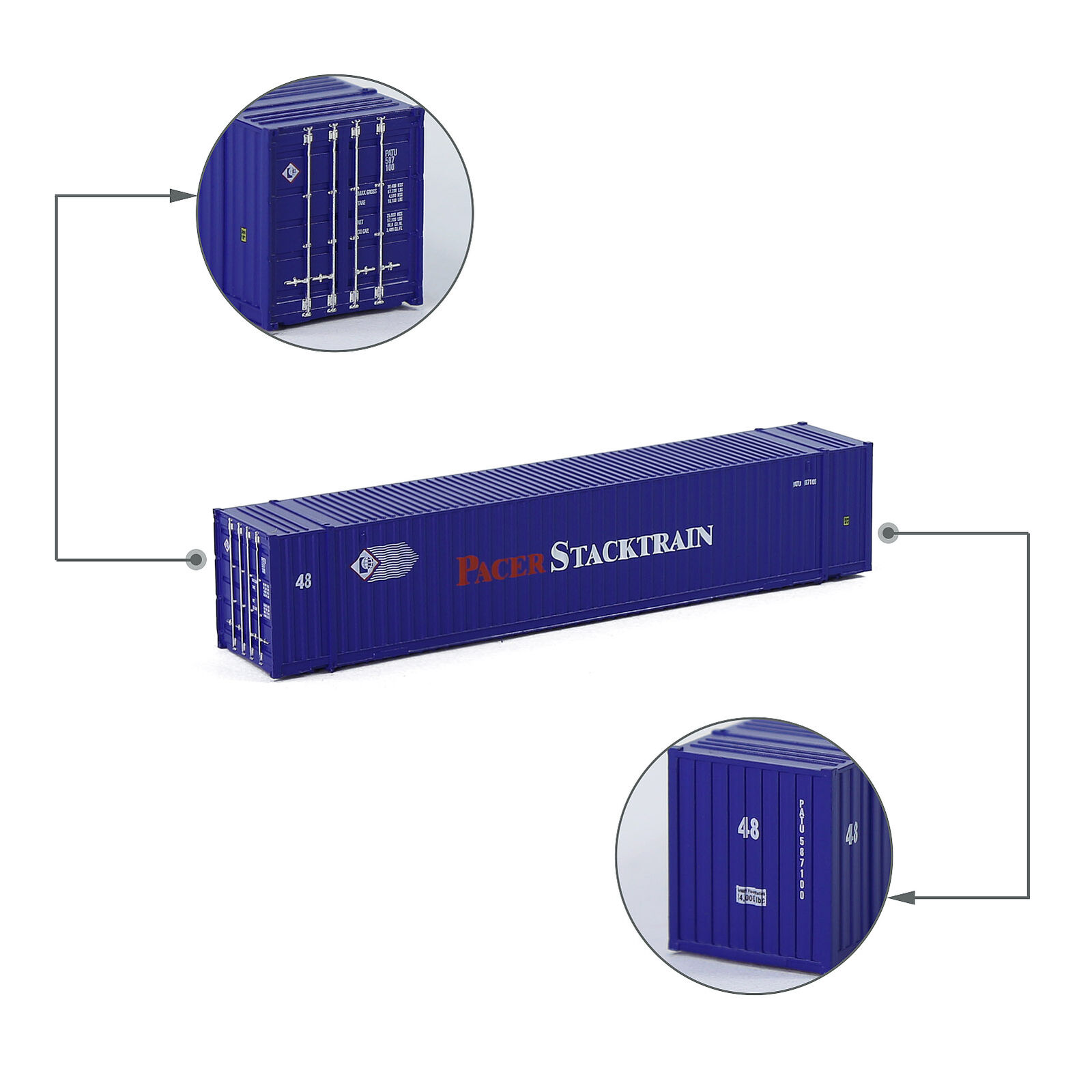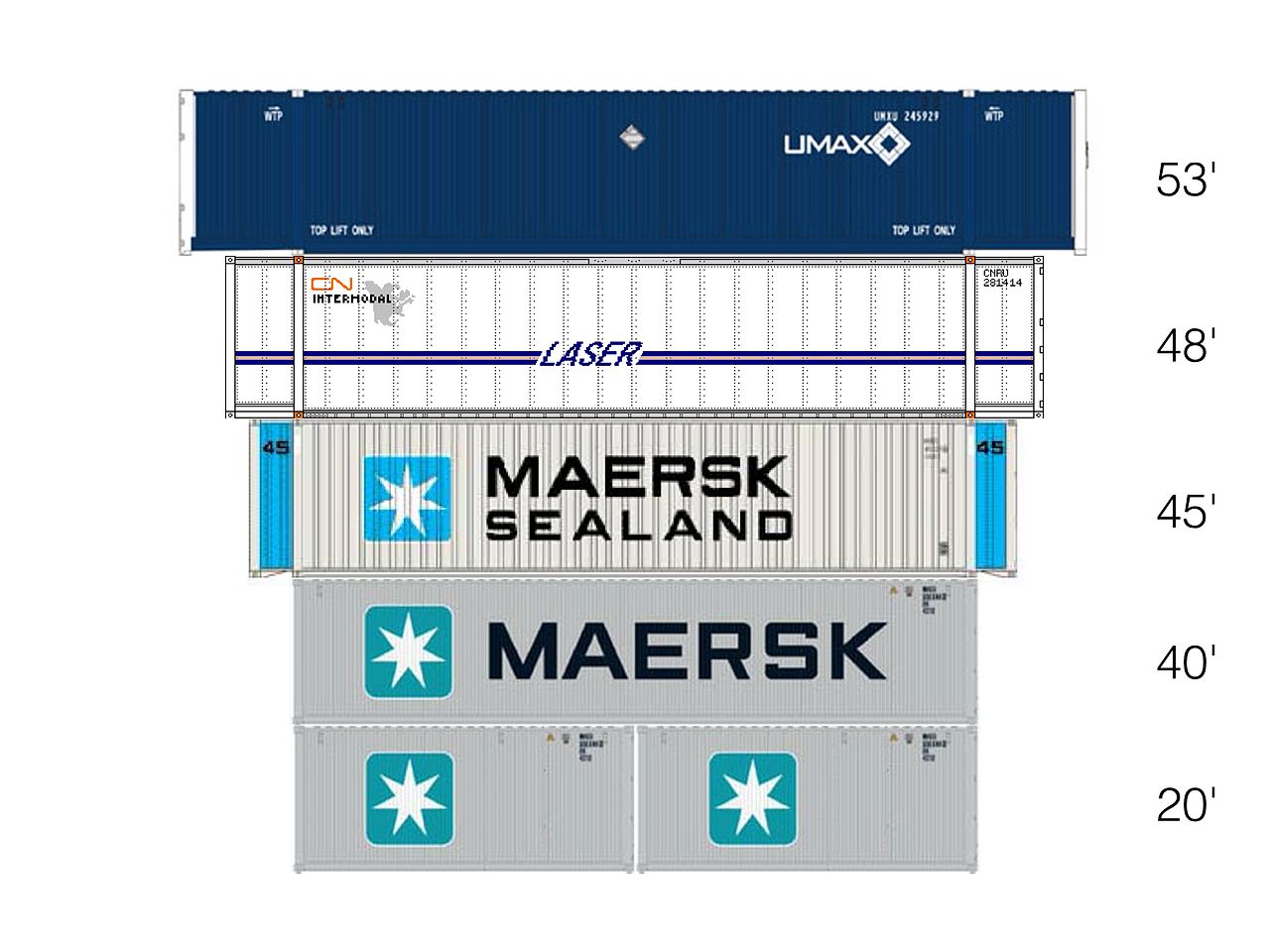Prototype History: An intermodal container is a large standardized shipping container, designed and built for intermodal freight transport, meaning these containers can be used across different modes of transport – from ship to rail to truck – without unloading and reloading their cargo. Intermodal containers are primarily used to store and transport materials and products efficiently and securely in the global containerized intermodal freight transport system, but smaller numbers are in regional use as well. These containers are known under a number of names, such as simply container, cargo or freight container, ISO container, shipping, sea or ocean container, container van or (Conex) box, sea or c can.
The 48-foot (14.63 m) shipping container is a High Cube container in that it is 9 ft 6 in (2.90 m) tall on the exterior. It is 8 ft 6 in (2.59 m) wide which makes it 6 inches (15 cm) wider than ISO-standard containers. This size was introduced by container shipping company APL in 1986, and is used domestically in North America on road and rail, and may be transported on deck by ship. This size being 8 feet (2.44 m) longer and 6 inches (15 cm) wider has 29% more volume capacity than the standard 40-ft High Cube, yet the cost to move it by truck or rail are almost the same.
From Wikipedia
The 48-foot (14.63 m) shipping container is a High Cube container in that it is 9 ft 6 in (2.90 m) tall on the exterior. It is 8 ft 6 in (2.59 m) wide which makes it 6 inches (15 cm) wider than ISO-standard containers. This size was introduced by container shipping company APL in 1986, and is used domestically in North America on road and rail, and may be transported on deck by ship. This size being 8 feet (2.44 m) longer and 6 inches (15 cm) wider has 29% more volume capacity than the standard 40-ft High Cube, yet the cost to move it by truck or rail are almost the same.
From Wikipedia
Road Name History: Pacer International, Inc. was one of the largest freight transportation and logistics services companies in North America. Through long-term agreements with railroads such as Union Pacific Railroad, CSX, Canadian National Railroad, and several Mexican railroads, Pacer International has access to a 50,000-mile North American rail network that embraces most of the major population and commercial centers in the United States, Canada, and Mexico. The company served regional, national, and global manufacturers and retailers, offering itself as a single source for all freight shipment and logistics support for its customers. Pacer International contracted with independent trucking contractors who control more than 700 trucks. The company's intermodal marketing operations were located in California, New Jersey, Tennessee, Illinois, and Ohio. In addition to its North American operations, Pacer International also operated as an international freight forwarder, an indirect ocean carrier, and a customs broker. The company served more than 1,000 clients internationally through 17 offices and approximately 100 agents. Pacer International was the largest provider of container intermodal rail service in North America that was not affiliated with a railroad.
Item created by: CNW400 on 2024-08-04 17:33:04
If you see errors or missing data in this entry, please feel free to log in and edit it. Anyone with a Gmail account can log in instantly.
If you see errors or missing data in this entry, please feel free to log in and edit it. Anyone with a Gmail account can log in instantly.






